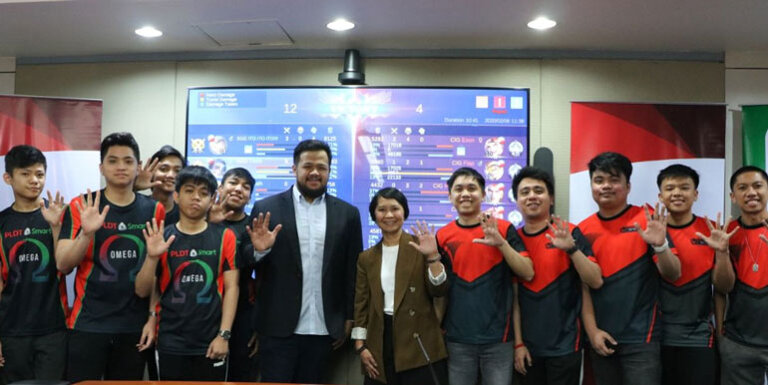Smart Communications recently held an esports exhibition match to showcase the power and speed of its 5G network.
E-athletes from PLDT-Smart Omega and Cignal Ultra Warriors played a friendly game of Mobile Legends using 5G-enabled smartphones connected to the Smart 5G network. The two teams are members of the esports league The Nationals.
In competitive esports games, a good internet speed and low latency are crucial factors for success. With the arrival of 5G, or fifth-generation wireless broadband technology, in the country, it is possible to play at a high level without relying on a Wi-Fi network.
5G is very promising and I am very excited to know that it will be promising for The Nationals. The athletes would surely love the lower latency which would allow them to maximize their response times and teams will benefit from other use cases like instant download of replays and access of VODs for their reviews and strategy phases.
Darren Vitug, Commissioner of The Nationals
The smartphones used at the exhibition match were the Huawei Mate 30 Pro 5G, the OPPO Reno 5G and the ZTE Axion 5G.
Also Read: Smart Prepaid call, text and data promos and packages to start your 2020
The telco is also set to deploy indoor 5G coverage to support the training grounds of various esports teams under The Nationals.
Smart has been a staunch supporter of the Philippines mobile games and esports scene. The telco recently completed the first two legs of its Smart Siklab Saya Mobile Legends tournament in NCR. The champion Team “Work” bested 31 other teams and took home the PHP 1 million grand prize.
Also Read: PLDT Home WiFi Prepaid now only P995; Offers 2x more data
Smart put up the country’s first 5G base stations in Makati and Pampanga in 2018. It launched 5G in Araneta City the year after, followed by another launch in Ateneo de Manila University.
PLDT and Smart also launched the Smart 5G Alliance with the objective of accelerating the development of 5G application in the Philippines. They made the first 5G Standalone (SA) video call in Southeast Asia using Nokia’s 5G SA core, radio and user equipment installed at the PLDT-Smart 5G Technolab.








